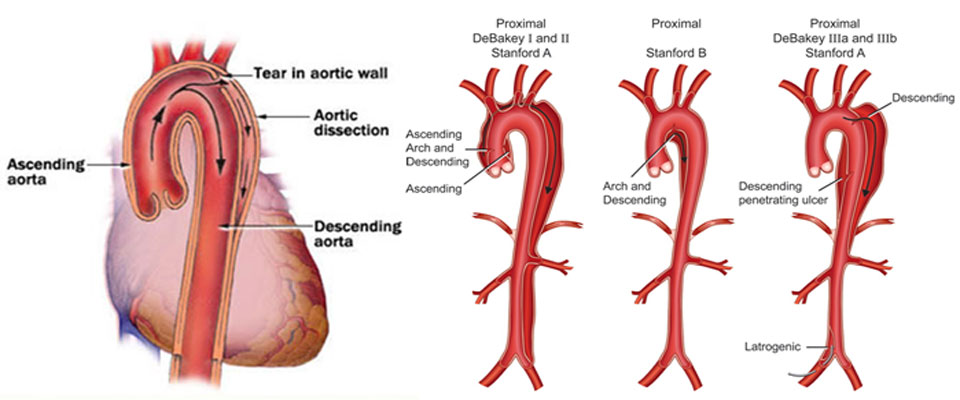
What Is Aortic Dissection?
The aorta is the main blood vessel that carries blood from the heart with high pressure. It gives branches to the head and neck, and then arches over the back of the chest alongside the backbone into the abdomen, giving the inner organs further branches. The aorta is a tough tube consisting of smooth muscle cells and elastic proteins. The tunica Intiman is lined by a special layer. Aortic dissections result from the intimate tearing and separation of the inner layer from the outer layer. This forms a tissue flap within the aorta. The tear usually begins high in the chest where the aorta arches to travel through the body. The acute tear can be very painful, felt like a searing sensation in the chest and back, sometimes mistaken for a heart attack. Not all dissections are painful; a dissection is sometimes detected in a patient who does not remember any painful attacks.
What Can Cause Aortic Dissection Problems?
There are two main problems with aortic dissections. First, the torn lining can form a tissue flap that blocks blood flow into the aorta's branches. The impact depends on which branch is affected. For example, if the head and neck artery is blocked, there may be a major stroke. If the artery provides a kidney, renal failure can occur. The second problem is a long-term problem. The aorta segment that has lost its normal lining is weakened and can balloon out and form an aneurysm in time. An aneurysm is an abnormal blood vessel bulging which is prone to bursting. For these reasons, treatment of aortic dissections is always worth considering.
How Are Treatments Of Aortic Dissections?
All patients with aortic dissections need very careful blood pressure control because it reduces the risk of long-term complications. More than one type of medication for blood pressure may be needed and beta-blocker tablets are almost always included in the treatment. Some patients with aortic dissection benefit from aortic stent-grafting endovascular treatment. This procedure is a key whole operation for placing a tough new lining in the torn aorta to prevent progression of the condition and to protect against the formation of an aneurysm. This is also called end grafting thoracic. The graft is placed in the groin via the femoral artery or in the lower abdomen via the iliac artery and manipulated under X-ray control to the correct position. This is usually done under anesthetic epidural without the need for general anesthetic, so even patients who are quite unfit can benefit.